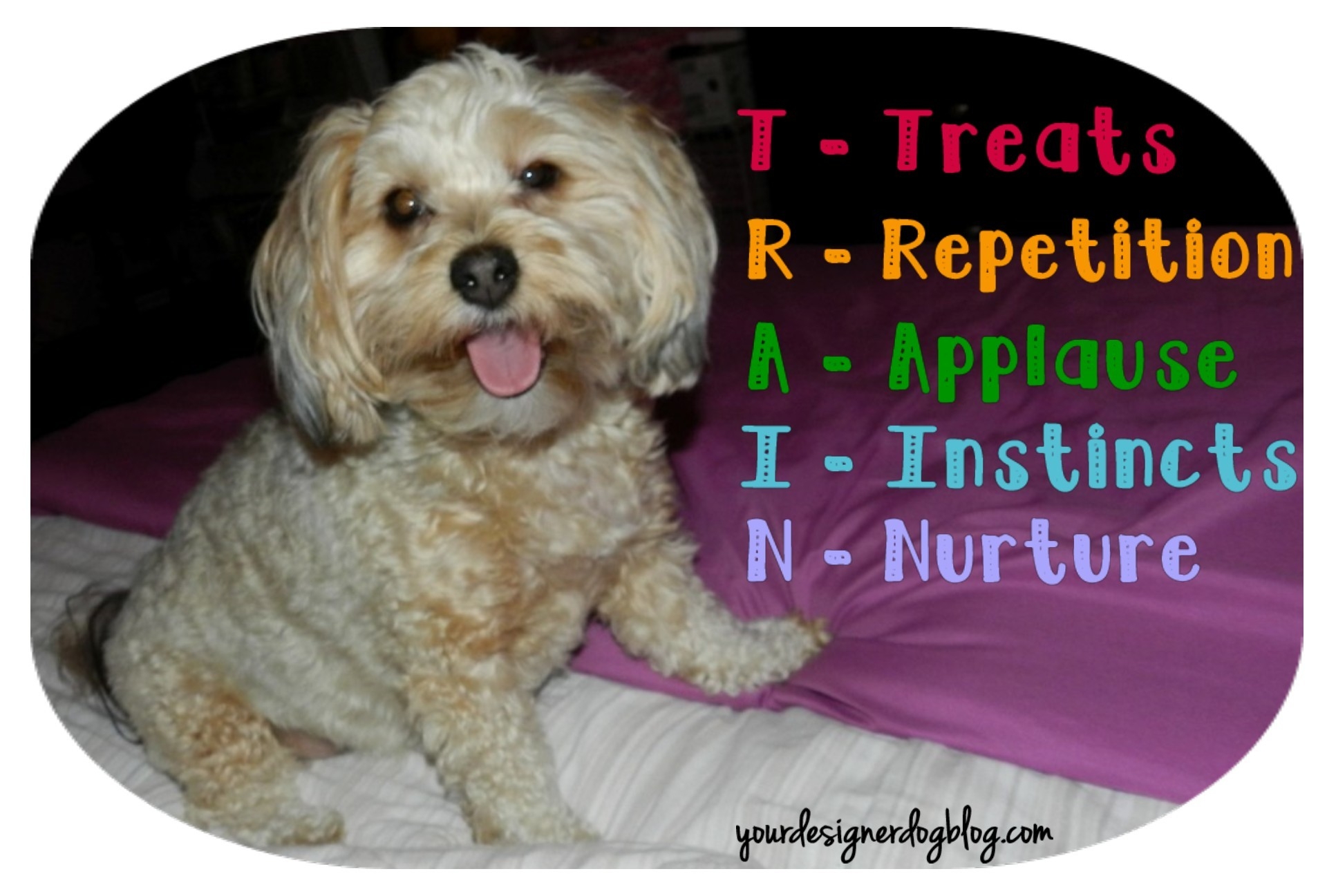Thanks for liking us! Sadie and I really appreciate the love!
Today I’ve decided to join the new Training Tips Tuesday blog hop. As it’s my first time joining this blog hop, I decided to share some basic dog training principles that I always like to consider when working with Sadie.
T – Treats
R – Repetition
A – Applause
I – Instincts
N – Nurture
Treats are the primary tool most use in their dog training. The easiest, quickest way to get a dog, or person for that matter, to do what you want is to bribe them. Hold out a good enough treat and your dog will likely bend over backwards trying to figure out what needs to be done to get that treat.
Repetition is fundamental when training your dog. In order to cement a word with a corresponding action in your dog’s mind, you need to repeat the command followed by action process many, many times. The more your dog performs a command or trick, the easier it will be to remember next time. And make sure to review and repeat old tricks and commands so that they aren’t forgotten when new ones are learned.
Applause is my way of saying that positive reinforcement works wonders in dog training. Many dogs, my own included, will do just about anything if it makes you smile and clap and say ‘good girl/boy’. Excitement is contagious, so if you get excited about your dog performing a certain action, your dog will also get excited about that action. Once your dog understands a command well enough, this type of positive reinforcement can replace treats as the reward for correctly following the command.
Instincts can be very useful when training your dog. Watching your dog’s natural behavior can give you many clues and opportunities to aid in training. For example, most dogs instinctively open their mouths if you hold a treat just above them. You can use this instinctive reaction as the foundation for teaching your dog to open his/her mouth on command or to catch an object or to take an object.
Nurturing your dog is also very important. A frustrated, unhappy dog is not likely to learn very well, and a frustrated, unhappy human is not likely to make a good teacher. Know your dog’s and your own limits and don’t worry if your dog doesn’t seem to get the gist of the command right away. Be supportive and understanding. Have a few short training sessions throughout the day, instead of trying to force your dog to pay attention for hours on end. If your dog is having trouble with a new command, take a break and end the training session with an old standard. That way you end on a high note and your dog feels proud that he or she did something right.
This post is part of the Training Tips Tuesday blog hop, hosted by DOGthusiast and Tiffany’s Diamond Dogs.
Thanks for liking us! Sadie and I really appreciate the love!



Curbing frustration is the hardest. You have to be patient when training a dog. If you get mad and stressed, it only makes matters worse. Good tips.
Emma recently posted…Make Your Pup A Banana Strawberry Ice Cream Cake
Great tips! I agree, frustration is so easy to run into (on both sides) and avoiding it so helpful. That applause helps 🙂
Love that you worked it into a way to remember too, with TRAIN!
Jen recently posted…What are the best techniques for rehabilitating a shelter dog? Training Tips Tuesday
Thank you for joining the Blog Hop! Love the applause part! Bella, Terra, & Kronos get so excited about something if I get excited and like you said that becomes a reinforcer in itself. If I’m boring in the training session, well, they get bored quickly too. 🙂
Tiffany’s Diamond Dogs recently posted…Training Tips Tuesday BlogHop: Changing Words to Change Minds